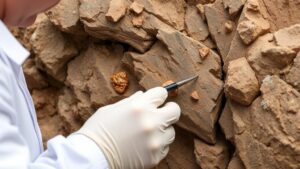Creating Recovery Systems for Lightweight Ore in Sandy Locations
Creating Recovery Systems for Lightweight Ore in Sandy Locations
The extraction of lightweight ore from sandy locations presents unique challenges that necessitate tailored recovery systems. This article delves into the methodologies employed for efficient recovery, the technologies utilized, and best practices for overcoming the specific conditions inherent to sandy terrains.
Understanding Lightweight Ore and its Characteristics
Lightweight ores, such as kaolin and lightweight aggregates, are characterized by their low density and high porosity. Typically found in sandy environments, these ores require specialized techniques for effective extraction and processing.
Key properties of lightweight ores include:
- Low Density: This allows for easier handling and transportation.
- High Porosity: Enables retention of moisture, influencing processing methods.
Unique Challenges in Sandy Locations
Extracting ores in sandy locations poses several challenges, including:
- Soil Erosion: Sandy soils are prone to erosion, which can lead to loss of material.
- Water Retention: The permeability of sandy soils makes water management critical.
- Equipment Stability: Heavy machinery may struggle to maintain stability on loose sand.
Recovery Systems for Lightweight Ore
1. Preliminary Site Assessment
A thorough preliminary site assessment is crucial for understanding the specific characteristics of the sandy location. This includes evaluating the orographic and hydrological conditions that impact ore recovery. For example, a case study of a kaolin mine in Georgia highlights the importance of assessing groundwater levels, which directly affect the operability and efficiency of recovery systems.
2. Techniques for Ore Recovery
Several key techniques are employed to effectively recover lightweight ore from sandy terrains:
- Dredging: Dredging is commonly used to extract lightweight ores from below the surface. Specialized dredges with buoyant capabilities allow for effective material movement without disturbing the surrounding ecosystem.
- Hydraulic Mining: This technique uses high-pressure water jets to dislodge ore from sandy deposits, making it easier to transport through pipelines.
- Surface Excavation: For shallower deposits, surface excavation can be performed with lighter machinery fitted with wider tracks to enhance stability.
3. Water Management Strategies
Water management is critical for success in sandy environments. following strategies can be employed to optimize recovery:
- Placement of Settling Ponds: These ponds allow fine particles to settle, minimizing the water required for recovery operations.
- Recycling Water: Useing a closed-loop water system can significantly reduce the water footprint of the operation.
Technological Innovations in Ore Recovery
1. Remote Sensing and GIS
Remote sensing technologies and Geographic Information Systems (GIS) have revolutionized ore recovery in sandy locations. These tools provide critical data for mapping ore deposits and assessing terrain stability. For example, a mining operation can use satellite imagery to identify variations in vegetation, indicating potential ore deposits beneath the surface.
2. Automated Recovery Systems
Automation in mining systems reduces the need for human intervention in challenging sandy environments. Drones equipped with sensors can monitor and analyze recovery areas, while autonomous vehicles can transport materials with precision and efficiency.
Conclusion and Actionable Takeaways
Creating effective recovery systems for lightweight ore in sandy locations requires a comprehensive understanding of both the characteristics of the ore and the unique challenges posed by sandy terrains. By implementing innovative technologies, employing best practices, and utilizing appropriate recovery techniques, mining operations can significantly enhance their efficiency and sustainability.
Key takeaways include:
- Conduct thorough preliminary site assessments to ensure tailored approaches.
- Employ diverse recovery techniques that suit the specific ore and site conditions.
- Use effective water management strategies to optimize resource use.
- Leverage technological advancements like GIS and automation for enhanced accuracy and efficiency in the recovery process.



